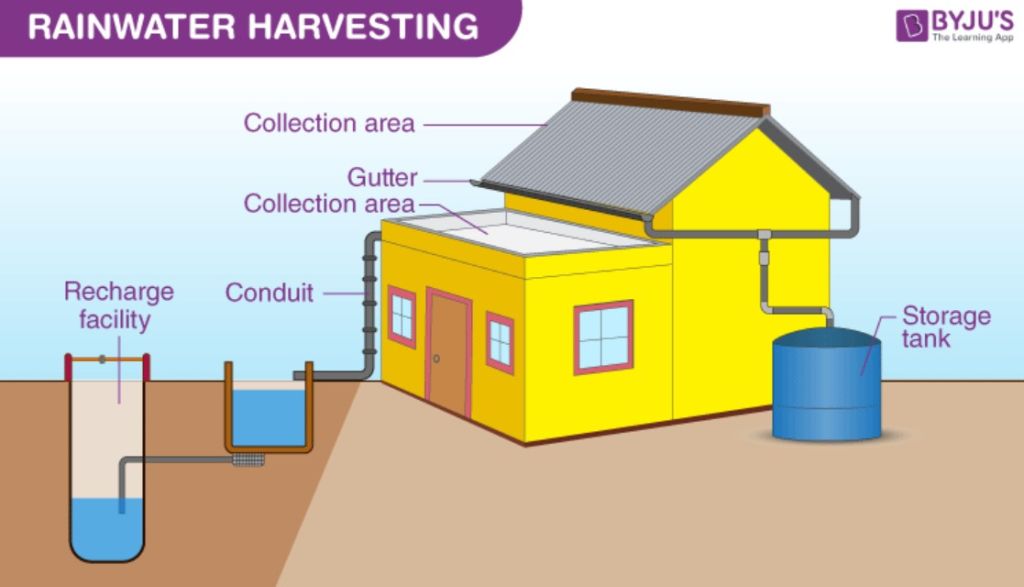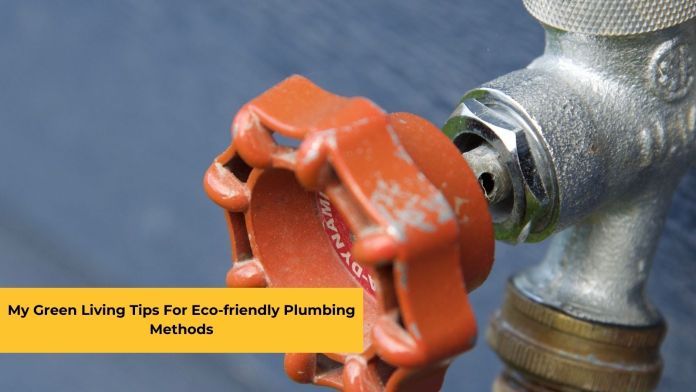Adopting greener plumbing strategies is an excellent way to welcome a more sustainable living style. Living green is not just about recycling or using energy-efficient devices; it also includes how you approach water usage and plumbing solutions in your home and office.
What Is Considered As Eco-friendly Plumbing Methods?
Eco-friendly, or “green,” plumbing differs primarily from traditional or “normal” plumbing in its sustainability-focused goals and methods. It aims to minimize environmental impact by conserving water and energy, reducing waste, and using sustainable materials. This involves innovative techniques such as rainwater harvesting, greywater recycling, and the installation of water and energy-saving fixtures and appliances. Eco-friendly plumbing also favors materials like PEX (cross-linked polyethylene) piping, which has a lower environmental impact than conventional materials.
On the other hand, traditional plumbing focuses more on functionality and efficiency, often using standard materials and systems without prioritizing environmental impact. Maintenance practices involve chemical-based solutions, which can potentially harm the environment. The fixtures and appliances used in traditional plumbing may have different energy or water-saving features. While customer education is part of both types of plumbing, eco-friendly plumbing emphasizes teaching customers about sustainable practices and conservation. As environmental awareness increases, however, traditional plumbing practices are evolving to incorporate more eco-friendly principles.
Exploring Efficient Plumbing Solutions
Now, let’s uncover some efficient plumbing solutions that could revolutionize how you use and conserve water. Remember, making these changes will benefit the environment and lower utility bills for you – a win-win situation for all accounts!
Also, consider reaching out to professionals who specialize in such areas. To learn more about efficient plumbing solutions, connect with them on LinkedIn at Fergusons Plumbing Group.
#1. Energy-Saving Water Heaters
The water heater in your home uses a lot of energy and keeps heating water even when you’re not using it. This can lead to wasting energy and higher bills. You can upgrade your water heater to a better model to save energy and be more eco-friendly.
Two good options are tankless and heat pump water heaters. Tankless water heaters only heat water when you need it, so they don’t waste energy keeping a tank of water hot all the time. Heat pump water heaters use electricity to move heat from the air or ground to heat water, making them much more energy-efficient than regular electric water heaters. Although they might cost more upfront, you’ll save money on energy bills in the long run, and it’s a step towards helping the environment.
Read more: How to Keep Your Home Safe and Warm By Using Gas Heaters.
#2. Low-Flow Toilets and Fixtures
Low-flow fixtures, including toilets, showerheads, and faucets, are designed to use less water than traditional models while delivering the same performance level. They operate by reducing the flow rate or aerating the water, which means mixing the water with air to maintain the pressure while using less water.
Low-flow toilets, for example, can use as little as 1.28 gallons per flush, compared to older models that can use up to 3.5 to 7 gallons per flush. Similarly, low-flow showerheads and faucets can significantly reduce water usage in daily activities like showering, hand washing, and dishwashing.
By opting for these fixtures, households can drastically reduce their water consumption, lowering utility bills and conserving a vital natural resource. This simple yet effective method makes low-flow fixtures a cornerstone of eco-friendly plumbing, contributing to sustainable living without sacrificing functionality or comfort.
#3. Incorporating Rainwater Harvesting Systems
Rainwater harvesting is a fantastic eco-friendly method that offers a sustainable solution for plumbing needs. It involves collecting rainwater from rooftops and other surfaces, storing it in tanks or reservoirs, and using it for non-drinking purposes like watering plants, flushing toilets, and cleaning. This helps reduce the pressure on regular water sources, saves money on water bills, and minimizes the environmental impact of water consumption. Moreover, rainwater harvesting prevents stormwater runoff, which can lead to soil erosion and flooding in urban areas, and contributes to responsible water management and environmental protection.


The best part about rainwater harvesting is that it benefits the environment and makes financial sense in the long run. Although setting up the system might have initial costs, the savings on water bills over time make it a worthwhile investment. Some places even offer incentives and tax credits to encourage people to adopt rainwater harvesting, making it an even more appealing eco-friendly option. By incorporating rainwater harvesting into plumbing systems, we can establish a sustainable water supply that meets our everyday needs while respecting nature and working towards a greener, more sustainable future for our communities.
#4. Greywater Recycling Innovations
Greywater recycling systems are a green plumbing solution that repurposes water from sinks, showers, and laundry drains. This recycled greywater is used for non-drinking purposes like flushing toilets and watering gardens, reducing the need for fresh water and wastewater generation. It’s a practical way to save water, reduce pollution, and promote sustainable plumbing. We can create a more environmentally friendly living space by adopting greywater recycling.
#5. Smart Technology Used In Plumbing Solutions
Smart technologies are transforming the plumbing industry, providing new and innovative solutions to make plumbing systems more environmentally friendly and efficient. One notable advancement is the use of smart water sensors. These sensors can detect leaks and abnormal water usage in real-time, allowing homeowners and building managers to act quickly. When a leak is detected, the system automatically shuts off the water supply, preventing water waste and potential damage. Smart water sensors help save water, reduce water bills, and lessen the environmental impact caused by leaks.
Water-efficient fixtures are another critical aspect of eco-friendly plumbing. Smart faucets, showers, and toilets are designed to use water more wisely. They can adjust water flow based on user habits or have hands-free operations to minimize water waste. By incorporating these water-saving fixtures, homes and buildings can significantly reduce water consumption, positively contributing to conservation efforts. Embracing these intelligent technologies in plumbing is a step forward in creating a more sustainable and resource-efficient future.
Benefits Of Implementing Eco-friendly Plumbing
As we strive to reduce our carbon footprint and protect the planet, one area where significant strides can be made is in our homes. Green plumbing systems offer an excellent opportunity for individuals to contribute to sustainable living while enjoying many benefits. Here are the main benefits of implementing eco-friendly plumbing methods.
#1. More Welcoming Incentives
Governments worldwide recognize the importance of being eco-friendly and offer incentives to encourage homeowners to make greener choices. These incentives are, for example, tax credits and rebates or reward enhancements that promote eco-friendliness, such as installing efficient plumbing systems. These incentives make green living more inviting and help offset the initial costs of eco-friendly upgrades, making them accessible to more homeowners.
#2. Positive Effects On Household Expenses
One of the best things about green plumbing is how it positively affects household expenses. While caring for the environment is rewarding, the financial benefits of going green are significant. Green plumbing systems are highly efficient, minimizing water wastage and energy consumption, resulting in substantial savings on utility bills over time. Whether you choose water-efficient faucets, low-flow toilets, or intelligent irrigation systems, eco-friendly plumbing choices lead to long-term savings and ease household financial burdens.
#3. Green Plumbing Is Not Ugly On The Outside
Contrary to the misconception that eco-friendly plumbing might compromise the look of homes, the truth is quite the opposite. Thanks to advancements in technology and design, many aesthetically pleasing options fully comply with green standards. From sleek, modern fixtures to beautifully crafted rainwater harvesting systems, these eco-friendly solutions contribute to a sustainable environment and enhance any home’s visual appeal. This harmony between sustainability and aesthetics is a compelling reason for homeowners to explore green plumbing options.
#4. Proven Real-life Case Studies
To inspire and motivate people to embrace green plumbing, numerous case studies provide tangible proof of its effectiveness when done right. These success stories highlight how eco-friendly plumbing strategies significantly reduce water consumption and improve energy efficiency. By presenting solid evidence of success, these case studies can convince doubters to become believers, encouraging more individuals to join the green plumbing movement.

BedZED Eco-Village, London, UK (Beddington Zero Energy Development) is an eco-friendly residential development in London. The development incorporates various green technologies, including eco-friendly plumbing systems. Residents use rainwater harvesting and greywater recycling to reduce water consumption. Low-flow fixtures and water-efficient appliances help further conserve water resources. BedZED is a pioneering example of sustainable urban planning and is recognized for its commitment to eco-friendly living.
References: BedZED – the UK’s first major sustainable community | Bioregional.
Steps Towards Green Efficient Plumbing
Going green doesn’t mean changing everything at once. It’s about making small but meaningful changes in our daily habits. By taking these steps, we can positively impact the environment and work towards a sustainable future.
We must spread the word about eco-friendly living to make a real difference. We can inspire a collective movement towards a greener world by sharing knowledge and encouraging others in our personal and professional circles to adopt green practices.
One area where we can save resources is our plumbing. Simple actions like using water-efficient fixtures or collecting rainwater can save water and energy. These changes not only help the environment but also reduce our utility bills.
Small Steps, Big Impact
Fueling a shift towards ecological consciousness calls for knowledge and strong advocacy. As emphasis on conservation and sustainable living persists, even minor progressive strides can amalgamate to impact maintaining a low-resource lifestyle substantially. This trajectory provides environmental benefits and cultivates more conducive living spaces for all concerned parties.
In Conclusion
In our journey towards a sustainable and environmentally conscious future, greener plumbing strategies offer numerous benefits for all. These eco-friendly approaches not only contribute to a healthier planet but also lead to economic advantages. Choosing a sustainable path ensures a successful and promising future as we evolve with ecological principles. So, let’s make wise choices today for a brighter and more sustainable tomorrow!



















